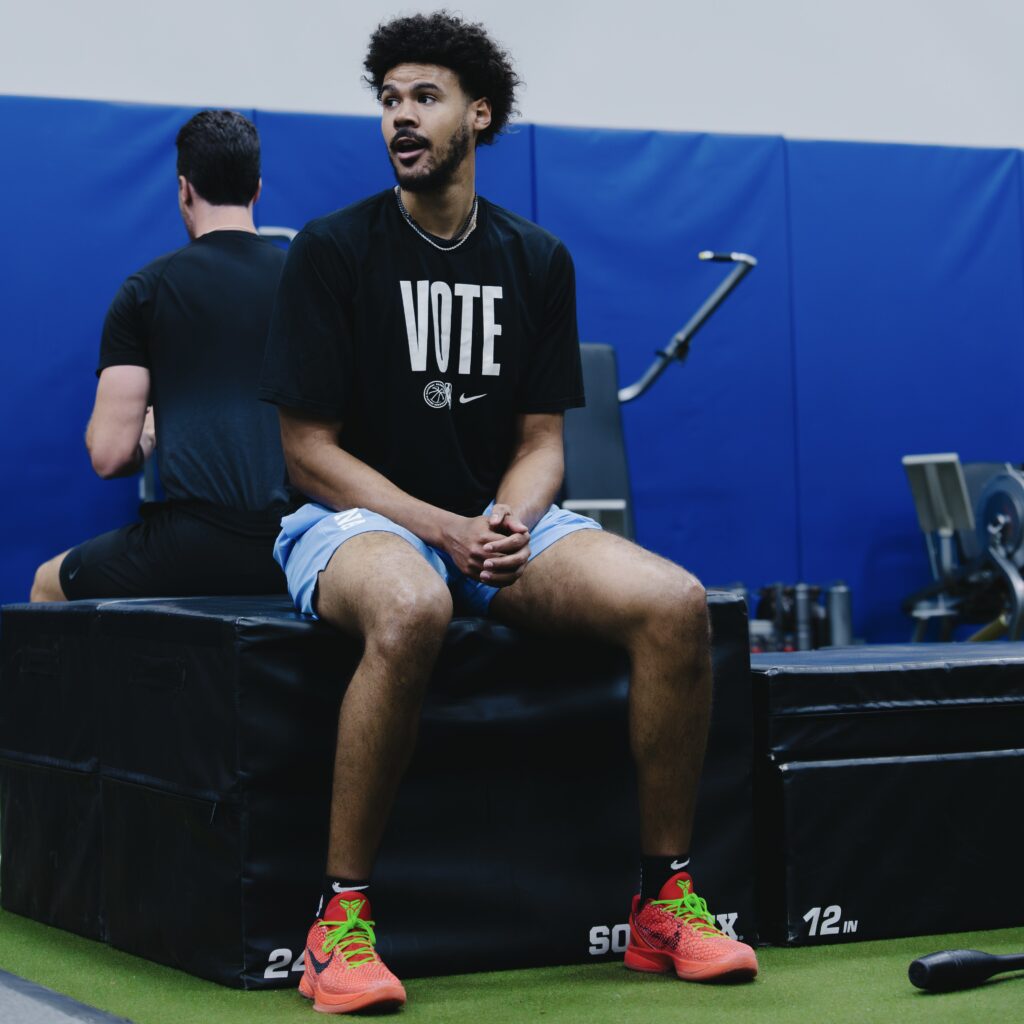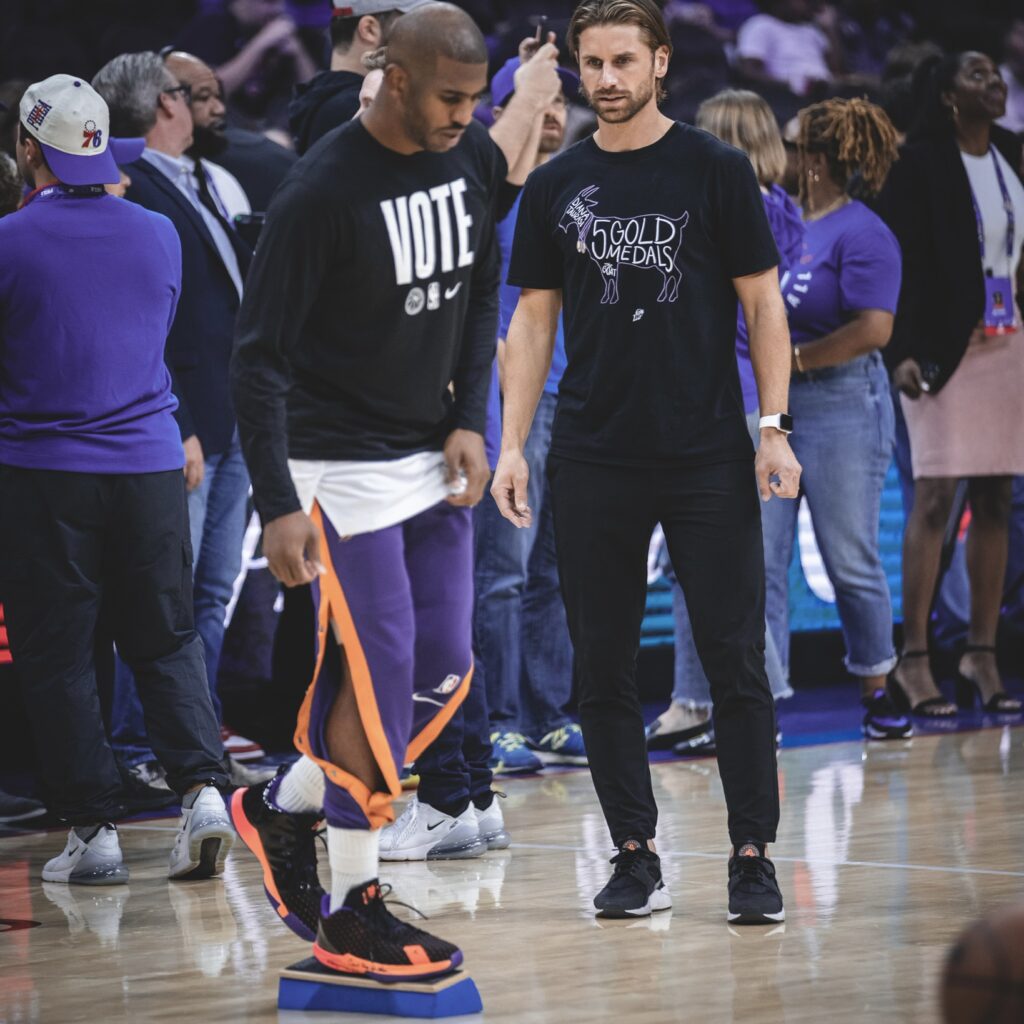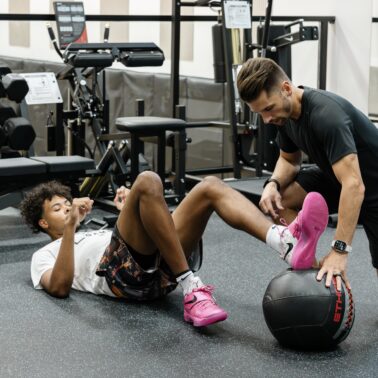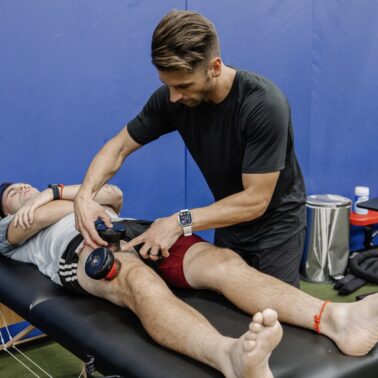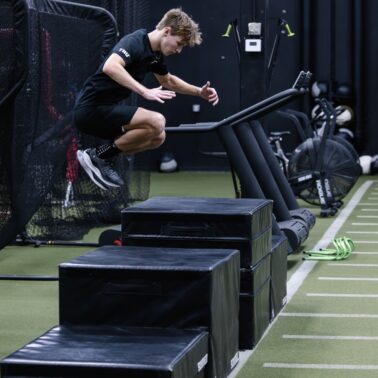Approximate Read Time: 7 minutes
“Sometimes the smallest doses carry the greatest effect—precision beats volume when time is limited.”
What You Will Learn
- Microdosing delivers small, frequent training doses to sustain strength and performance.
- This approach minimizes fatigue while preserving adaptations across long, congested seasons.
- Research highlights its effectiveness for sprint performance, motor learning, and injury management.
Why Less Can Be More
In team sports, the challenge isn’t always about how much training you can do. More often, it’s about how much you can recover from. Athletes juggle games, practices, travel, and life, leaving performance staff with limited windows to apply meaningful strength and conditioning.
Enter microdosing—a strategy that breaks traditional training molds by spreading smaller doses of training across the week instead of cramming them into one or two heavy sessions.
Microdosing offers coaches and physical therapists a flexible solution to integrate strength, power, or sprint work into high-stress seasons without sacrificing performance or risking overtraining.”
On the surface, it sounds like rebranding. Isn’t this just “doing less more often”? Critics argue it’s old wine in a new bottle (Afonso et al., 2022). But the nuance matters. Microdosing is about dividing the weekly training volume into shorter, frequent, high-quality sessions that fit within congested schedules, reduce fatigue, and maintain adaptations across long seasons.
What is Microdosing?
At its core, microdosing is the distribution of training volume into frequent, short-duration bouts across a microcycle (Cuthbert et al., 2024). Instead of a full 60-minute strength session, you might deliver two or three 20-minute “movement snacks” spaced across the week. The weekly volume stays the same, but the experience of the dose—and the athlete’s response—changes.
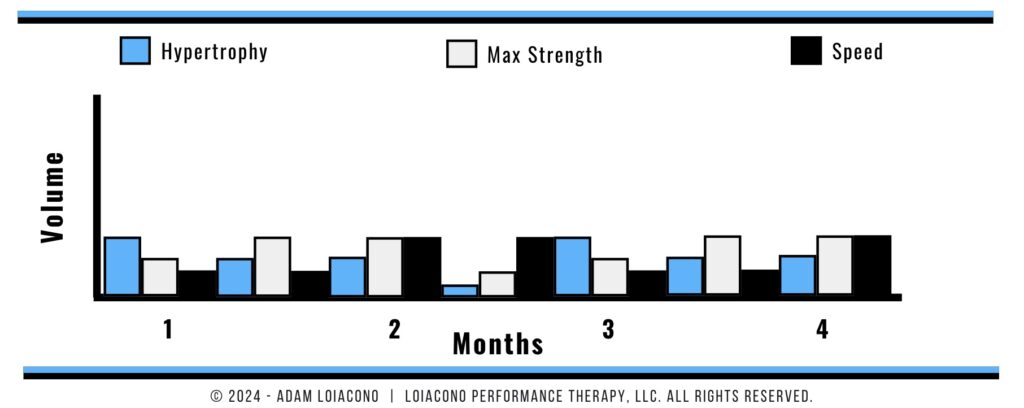
This approach has parallels with distributed practice in motor learning, where spacing practice across time improves skill acquisition and retention compared to “massed practice.” But microdosing isn’t only about learning. It’s about physiology, fatigue management, and practicality.
For example, during in-season phases when fixture congestion makes recovery a priority, strength training volume often drops so low that athletes risk losing residual adaptations like maximal force or power. Microdosing offers a solution: keep the total stimulus alive, without creating unnecessary fatigue at the wrong time (Cuthbert et al., 2024).
The Benefits of Microdosing
1. Fatigue Management
Research in field hockey players showed that when sprint training was microdosed into four smaller sessions per week, athletes improved acceleration capacity while experiencing less neuromuscular fatigue compared to a traditional two-session model. The microdosing group had lower countermovement jump (CMJ) decrements after training, yet still improved sprint times from 5 to 25 m (Cuadrado-Peñafiel et al., 2023)
In practice, this means athletes arrive at the next practice fresher, while still accumulating the necessary sprint exposures.
2. Maintaining Residuals
| System/Quality | Residual Effect (days) |
| Aerobic Energy System | 30 ± 5 |
| Strength | 30 ± 5 |
| Anaerobic Energy System | 18 ± 4 |
| Power | 15 ± 5 |
| Creatine-Phosphate System | 5 ± 3 |
| Speed | 5 ± 3 |
Training adaptations decay at different rates. Strength and hypertrophy last weeks to months, but qualities like speed and explosive power can fade in days if not refreshed (Issurin, 2016). Microdosing is particularly valuable for maintaining these “short-term residuals” by providing frequent, low-volume exposures to speed, plyometrics, or high-load lifts without crushing the athlete’s recovery (Cuthbert et al., 2024)
3. Motor Learning and Skill Retention
Distributed exposures improve neuromuscular learning. Just as a child learns piano faster with daily 15-minute practice than one long weekly session, athletes refine sprint mechanics or lifting technique through repeated, lower-dose exposures. Research suggests greater frequency improves opportunities for feedback, coordination, and retention of complex movements (Cuthbert et al., 2024)
4. Psychological Buy-In
Short, targeted sessions can be easier for athletes to commit to. For players who dislike heavy lifting after long practices, a 20-minute microdose session might be easier to sell than a full hour. Compliance matters, and microdosing often feels less intrusive.
The Shortcomings of Microdosing
Despite the buzz, microdosing is not a magic bullet.
- Volume is King for Hypertrophy: While strength can be maintained or even improved with microdosing, hypertrophy is still volume-dependent. If total weekly load is reduced too much, growth adaptations stall. Microdosing is better for maintaining or sharpening, not building.
- Practical Barriers: More frequent sessions mean more scheduling and more touchpoints with athletes. In professional environments, this requires logistical buy-in from coaching staff.
- Risk of Oversimplification: Some equate microdosing with the “minimum effective dose.” They are not the same. Microdosing is about distribution of volume, not necessarily reduction of volume (Afonso et al., 2022).
- Not Always Superior: Meta-analyses show that, when volume is equated, periodization models like daily undulating periodization often outperform static models for strength (Moesgaard et al., 2022; Rhea et al., 2002). Microdosing is a tool, but not necessarily better than traditional strategies in every context.
Best Use-Cases for Microdosing
So when does microdosing shine?
- Congested Competition Calendars: Basketball, soccer, hockey, and rugby seasons often cram multiple matches per week. Traditional lifts are sacrificed, but microdosing allows strength exposures to persist without adding fatigue.
- Travel Periods: Short hotel-based micro-sessions keep tissues primed during road trips.
- Return-to-Play: Microdosing eccentric or novel stimuli reduces soreness while building repeated-bout protection (Cuthbert et al., 2024)
- Youth Development: Frequent, short exposures fit better with attention spans and provide more opportunities for feedback.
- Psychological Strategy: Athletes resistant to heavy lifting may buy into shorter, higher-frequency training doses.
A Case Story: Microdosing in Practice
Imagine a professional soccer team in the middle of a the season. They play Saturday, Tuesday, and Saturday again. The week is chaos—travel days, media days, regeneration sessions, and team practices. In this schedule, a traditional block periodization model is unrealistic.
“By maintaining training residuals through consistent, low-dose sessions, microdosing helps preserve speed, power, and coordination—qualities that often decay quickly during busy competition calendars.”
Instead, the strength coach inserts three microdose exposures:
- Monday: 2 sets of trap bar deadlifts (3 reps) after regen.
- Wednesday: 2 sets of Bulgarian split squats (5 reps) before team practice.
- Friday: contrast priming—2 heavy set of squats followed by box jumps.
Each session takes less than 20 minutes. Across the week, the total volume matches one traditional strength session. The athletes preserve residual strength and maintain neural drive, without compromising freshness for the games.
Conclusion: Small Doses, Big Strategy
Microdosing isn’t new, but it has become popular. In modern sport, where fixture congestion and athlete management are more complex than ever, the value of small, distributed doses is undeniable. Research supports its role in maintaining sprint performance, reducing fatigue, and preserving training residuals across long seasons.
Still, microdosing is not a panacea. It won’t replace traditional block periodization or the need for progressive overload. Instead, it is a tool in the kit—a flexible, practical method to maintain performance when time, fatigue, or context make traditional programming impossible.
For performance coaches, athletic trainers, and physical therapists, the question isn’t whether microdosing works. The question is when—and how—it can be applied most effectively.
Free Download
Watch More Like This
Read More Like This
Related Podcasts
References
Afonso J, Nakamura FY, Baptista I, et al. Microdosing: Old wine in a new bottle? Current state of affairs and future avenues. Int J Sports Physiol Perform. 2022;17(11):1649–1652Microdosing. Old Wine in a New ….
Cuthbert M, Haff GG, McMahon JJ, Evans M, Comfort P. Microdosing: A conceptual framework for use as programming strategy for resistance training in team sports. Strength Cond J. 2024;46(2):180–198microdosing_aconceptual_framewo….
Cuadrado-Peñafiel V, Castaño-Zambudio A, Martínez-Aranda LM, et al. Microdosing sprint distribution as an alternative to achieve better sprint performance in field hockey players. Sensors. 2023;23(2):650Microdosing Sprint Distribution….
Issurin VB. Benefits and limitations of block periodized training approaches to athletes’ preparation: a review. Sports Med. 2016;46(3):329–338.
Moesgaard L, Beck M, Christiansen L, et al. Effects of periodization on strength and hypertrophy in volume-equated resistance training: a systematic review and meta-analysis. Sports Med. 2022;52(7):1323–1342Moesgaardetal.2022. Effects of ….
Rhea MR, Ball SD, Phillips WT, Burkett LN. A comparison of linear and daily undulating periodized programs with equated volume and intensity for strength. J Strength Cond Res. 2002;16(2):250–255A Comparison of Linear and Dail….
